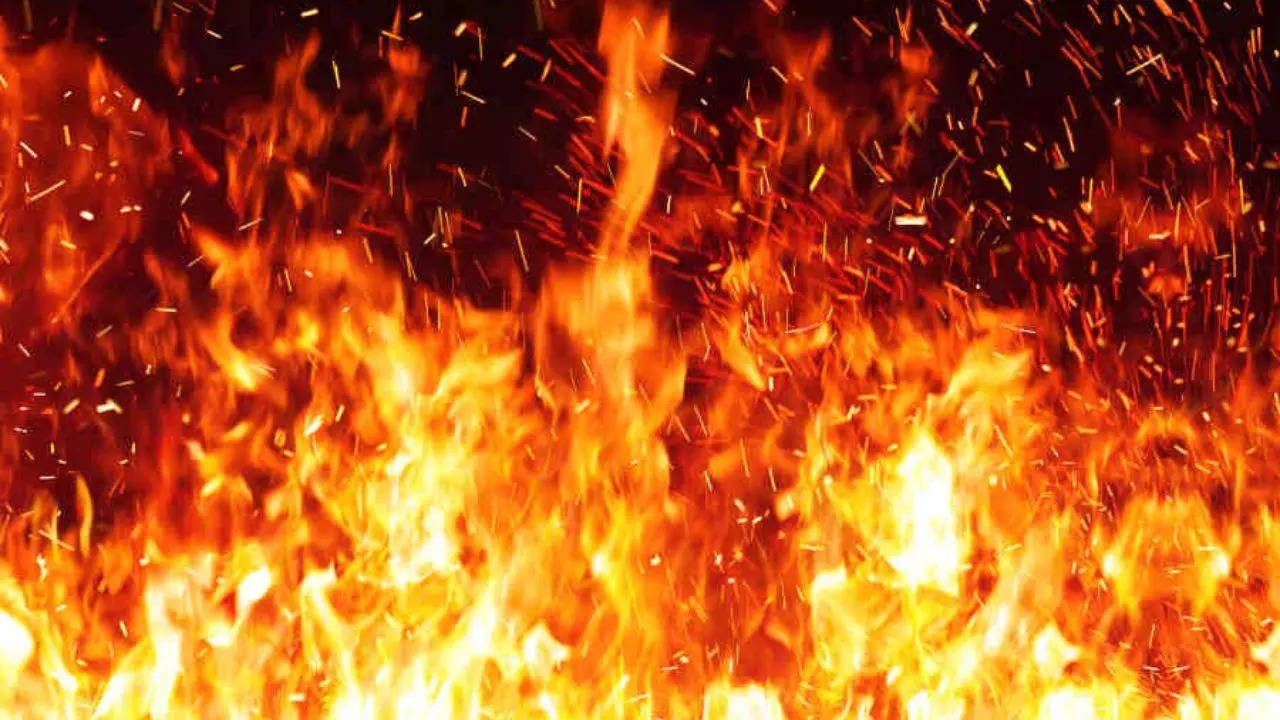Fire Tanker Trucks For Sale: Your Comprehensive Guide to Acquiring Essential Water Resources pickup.truckstrend.com
Introduction: The Lifeline of Water Delivery
In the world of firefighting, water is the most fundamental weapon against the destructive force of fire. While urban areas often boast extensive hydrant systems, vast stretches of rural, industrial, or remote landscapes lack this crucial infrastructure. This is where the venerable fire tanker truck, also known as a water tender, steps into its vital role. These specialized vehicles are designed to transport and deliver large volumes of water to fire scenes where direct hydrant access is limited or non-existent, acting as mobile reservoirs that keep the attack lines flowing.
Fire Tanker Trucks For Sale: Your Comprehensive Guide to Acquiring Essential Water Resources
Acquiring a fire tanker truck is a significant investment, whether for a volunteer fire department, a municipal brigade, a private industrial facility, or even a specialized firefighting contractor. The market for fire tanker trucks for sale offers a diverse range of options, from brand-new custom-built machines to meticulously maintained used vehicles. This comprehensive guide aims to demystify the process, providing insights into types, features, buying considerations, and practical advice to help you make an informed decision when searching for your next essential water delivery asset.
What is a Fire Tanker Truck?
A fire tanker truck, or water tender, is a type of fire apparatus primarily dedicated to transporting and supplying large quantities of water to a fire scene. Unlike pumpers which focus on pumping water directly from a hydrant or external source, tankers excel at carrying water from a fill point to the incident, often participating in water shuttle operations to maintain a continuous supply.
Key Components:
- Chassis: A heavy-duty truck chassis capable of supporting the immense weight of water.
- Tank: The most prominent feature, typically made of stainless steel, polypropylene, or fiberglass, designed to hold thousands of gallons of water (commonly 1,500 to 4,000 gallons, but can be larger).
- Pump: While some are purely tenders, many modern tankers include a pump (often 500-1500 GPM) to offload water, fill their own tank, or even supply attack lines directly.
- Plumbing & Discharges: Large diameter hose (LDH) connections for rapid dumping or filling, as well as smaller discharges for direct firefighting or supply to other apparatus.
- Storage: Compartments for hoses, nozzles, portable tanks (dump tanks), and other ancillary equipment.

Why Purchase a Fire Tanker Truck?
The reasons for investing in a fire tanker truck are numerous and often critical to effective fire suppression:

- Rural Firefighting: In areas without hydrants, tankers are indispensable for bringing water directly to the fire, allowing engine companies to remain on scene and maintain suppression efforts.
- Water Shuttle Operations: Tankers form the backbone of water shuttle operations, continuously ferrying water from distant fill points (lakes, ponds, dry hydrants, municipal hydrants) to the fire ground, ensuring a steady supply.
- Industrial Applications: Large industrial complexes, refineries, or manufacturing plants often have their own internal fire brigades that require substantial water reserves for emergencies.
- Cost-Effectiveness: For departments with budget constraints, a well-maintained used tanker can provide significant capabilities at a fraction of the cost of a new custom build.
- Specialized Needs: From wildland urban interface (WUI) fires to agricultural emergencies, the ability to rapidly deploy large volumes of water is paramount.

Types of Fire Tanker Trucks
The world of fire tankers isn’t one-size-fits-all. Different designs cater to specific operational needs:
- Water Tenders (or Basic Tankers): These are purely designed for water transport. They have large tanks (often 2,000+ gallons) and a simple pump system, primarily for rapid dumping into portable tanks or supplying other apparatus. They may have minimal attack capabilities.
- Pumper-Tankers (or Tender-Pumpers): These hybrid vehicles combine the water-carrying capacity of a tender with the pumping and attack capabilities of a pumper. They typically have a large tank (1,000-2,000 gallons) and a substantial fire pump (1,000-1,500 GPM), allowing them to function as an initial attack engine and a water supply unit.
- Brush Trucks/Wildland Tankers: Smaller, highly maneuverable vehicles built on 4×4 or 6×6 chassis, designed for off-road access in wildland environments. They carry smaller water tanks (typically 300-1,000 gallons) and often have specialized pumps, foam systems, and ground spray nozzles for wildland firefighting.
- Industrial Tankers: Built for heavy-duty industrial applications, these can be very large, often semi-trailer based, carrying immense volumes of water or foam concentrate for large-scale incidents.
- Aircraft Rescue and Firefighting (ARFF) Tankers: Highly specialized vehicles found at airports, designed to carry large volumes of water and foam for aircraft fires.
Key Features and Specifications to Consider
When evaluating fire tanker trucks for sale, a thorough understanding of their specifications is crucial:
- Tank Capacity: The most critical factor. Common sizes range from 1,500 to 4,000 gallons. Consider your department’s needs and the typical distances to water sources.
- Pump Type & Capacity: Does it have a dedicated fire pump (e.g., 1,000 GPM) for direct attack, or just a smaller transfer pump for rapid dumping?
- Chassis & Engine: Heavy-duty commercial chassis (e.g., Freightliner, Kenworth, International, Peterbilt, Spartan) are common. Assess engine horsepower, torque, and transmission for reliability and performance, especially when fully loaded.
- Suspension & Axles: Must be robust enough to handle the immense weight of water, especially over rough terrain.
- PTO (Power Take-Off): Essential for operating the pump.
- Foam Capabilities: Does it have an integrated foam system (Class A, Class B, or both) for specialized incidents?
- Plumbing & Discharges: Look for large diameter hose (LDH) quick-dump valves (e.g., 8" or 10") for rapid water transfer, as well as multiple smaller discharges and intakes.
- Auxiliary Equipment: Check for included portable dump tanks, ground monitors, hose beds, and tool compartments.
- Lighting & Safety Features: Adequate emergency lighting, scene lighting, reflective striping, and safety interlocks are paramount.
- Maintenance History: Especially for used trucks, a detailed maintenance log is invaluable. Look for evidence of regular servicing, pump tests, and repairs.
New vs. Used Fire Tanker Trucks
The choice between new and used depends heavily on budget, immediate needs, and desired customization.
New Fire Tanker Trucks:
- Pros: Full customization to exact specifications, latest technology, full factory warranty, reliable performance, longer service life.
- Cons: High upfront cost, long lead times for manufacturing.
Used Fire Tanker Trucks:
- Pros: Significantly lower cost, immediate availability, proven reliability (if well-maintained), less depreciation.
- Cons: May require immediate repairs or upgrades, limited customization options, unknown maintenance history (if records are incomplete), older technology.
Practical Advice: For many volunteer departments or smaller municipalities, a well-maintained used tanker offers an excellent balance of capability and affordability. Prioritize trucks from reputable departments or dealers with clear service records.
Where to Find Fire Tanker Trucks For Sale
The market for fire tanker trucks is specialized but accessible:
- Specialized Fire Apparatus Dealerships: These dealers often sell both new and used apparatus, offering trade-ins and sometimes financing. They typically have knowledgeable staff and service departments.
- Online Marketplaces & Auction Sites: Websites like FireTrucksForSale.com, Government Liquidation, and various online auction platforms frequently list used fire apparatus from departments upgrading their fleets.
- Direct from Fire Departments: Many departments sell their older apparatus directly when they replace them. Keep an eye on local government surplus auctions or contact departments in your region.
- Brokers & Consultants: Specialized brokers can help source specific types of trucks and guide you through the purchasing process.
- Industry Trade Shows: While primarily for new apparatus, trade shows can be a good place to network and discover upcoming availability.
The Buying Process: A Step-by-Step Guide
Acquiring a fire tanker truck is a significant procurement. Follow these steps for a smooth process:
- Needs Assessment: Define your operational requirements. How much water do you need to carry? What terrain will it operate on? What pumping capabilities are essential?
- Budget Determination: Establish a realistic budget, including the purchase price, potential refurbishment costs, transport, insurance, and initial maintenance.
- Research & Identification: Use online resources, dealer networks, and industry contacts to identify potential candidates that match your criteria.
- Initial Contact & Information Gathering: Request detailed specifications, photos, videos, and maintenance records. Ask about the reason for sale.
- On-Site Inspection (Crucial!): If possible, physically inspect the truck. Bring a mechanic or an experienced apparatus operator. Check for rust, leaks, structural integrity, tire condition, pump operation, and electrical systems. Test drive it, especially with a simulated full load if possible.
- Professional Appraisal: For higher-value vehicles, consider a third-party appraisal to ensure fair market value.
- Negotiation: Be prepared to negotiate on price, especially for used vehicles.
- Financing & Insurance: Secure financing (loans, grants) and specialized insurance for emergency vehicles.
- Legal & Documentation: Ensure all titles, registrations, and sales agreements are properly handled.
- Delivery & Post-Purchase Checks: Arrange for transport. Upon arrival, conduct a thorough pre-service inspection and address any immediate needs.
Important Considerations & Challenges
- Regulatory Compliance: Ensure the truck meets all federal, state, and local regulations for emergency vehicles (e.g., DOT, NFPA standards).
- Maintenance Costs: Fire apparatus, especially older ones, can have significant ongoing maintenance costs. Factor this into your budget.
- Training: Ensure your personnel are properly trained to operate the specific tanker model you acquire, especially with its unique pumping and dumping systems.
- Specialized Insurance: Standard commercial vehicle insurance may not cover emergency apparatus; you’ll need specialized policies.
- Customization Limitations: For used trucks, extensive customization can be costly or impractical. Assess if the existing configuration meets most of your needs.
- Weight Restrictions: Be aware of road weight limits in your operating area, especially with a fully loaded large tanker.
Tips for a Successful Purchase
- Thorough Inspection is Paramount: Never buy sight unseen. If a physical inspection isn’t possible, hire a reputable third-party inspection service.
- Verify Documentation: Insist on complete maintenance records, pump test certifications, and ownership history.
- Test Drive: Always test drive the truck, paying attention to engine performance, braking, transmission shifts, and any unusual noises.
- Understand Warranty (or Lack Thereof): New trucks come with warranties; used trucks typically do not, sold "as-is." Be prepared for potential post-purchase issues.
- Consult Experts: Lean on experienced mechanics, apparatus operators, or fire chiefs during your evaluation process.
Fire Tanker Trucks For Sale: Sample Price Guide
Please note: Prices for fire tanker trucks vary wildly based on age, condition, tank capacity, pump capabilities, chassis type, mileage, and included features. This table provides estimated ranges to give you a general idea. New, custom-built apparatus can easily exceed $500,000.
| Type of Tanker Truck | Age Range | Tank Capacity (Gallons) | Pump (GPM) | Chassis Type | Est. Price Range (USD) | Key Features/Notes |
|---|---|---|---|---|---|---|
| Used Basic Water Tender | 15-25 yrs | 2000-3000 | 500-750 | Commercial | $30,000 – $80,000 | Often ex-municipal, good for backup/support, may need minor updates. |
| Used Pumper-Tanker | 10-20 yrs | 1000-2000 | 1000-1500 | Commercial/Custom | $70,000 – $180,000 | Versatile, combines attack & supply, popular for smaller departments. |
| Used Wildland/Brush Tanker | 8-18 yrs | 300-750 | 250-500 | 4×4 Pick-up/Medium | $25,000 – $70,000 | Off-road capability, often with foam, good for brush/forest fires. |
| Refurbished/Remounted Tanker | 0-10 yrs (on new chassis) | 2000-3500 | 750-1500 | New Commercial | $150,000 – $300,000 | Older body/tank on new chassis, cost-effective alternative to new. |
| New Standard Water Tender | New | 2500-3500 | 750-1000 | Commercial | $250,000 – $400,000 | Customizable, full warranty, latest features. |
| New Pumper-Tanker | New | 1500-2000 | 1250-1500 | Custom | $400,000 – $600,000+ | High-performance, full attack & supply capabilities, top-tier build quality. |
Frequently Asked Questions (FAQ)
Q1: What is the difference between a fire tanker and a fire tender?
A1: These terms are often used interchangeably. Both refer to apparatus primarily designed for transporting large volumes of water to a fire scene. Some might differentiate by pump capability, with "tenders" being purely transport and "tankers" having more robust pumping capabilities, but this distinction is not universally applied.
Q2: How much water can a typical fire tanker truck hold?
A2: Most fire tanker trucks hold between 1,500 and 4,000 gallons of water. Larger industrial or semi-trailer based tankers can hold significantly more.
Q3: What kind of driver’s license do I need to operate a fire tanker truck?
A3: In most jurisdictions, due to the gross vehicle weight rating (GVWR) of a fully loaded tanker, a commercial driver’s license (CDL) with appropriate endorsements (e.g., Tanker Endorsement) is required. Specific requirements vary by state/province and the truck’s weight.
Q4: Can a fire tanker truck also pump water onto a fire?
A4: Many modern fire tanker trucks, especially "pumper-tankers," are equipped with a fire pump that allows them to pump water directly onto a fire, supply other apparatus, or self-fill from static water sources. Basic water tenders may only have a smaller transfer pump for rapid dumping.
Q5: What are the main types of water tanks used in fire tankers?
A5: Common tank materials include polypropylene (lightweight, corrosion-resistant), stainless steel (durable, traditional), and fiberglass. Each has its pros and cons regarding weight, cost, and longevity.
Q6: How often should a fire tanker truck’s pump be tested?
A6: According to NFPA 1911 standards, fire apparatus pumps should be tested annually to ensure they meet their rated performance specifications.
Conclusion: Investing in Preparedness
A fire tanker truck is more than just a vehicle; it’s a critical component of emergency preparedness, especially for communities and industries located far from reliable water sources. Whether you’re a fire chief seeking to enhance your department’s rural firefighting capabilities, an industrial safety manager aiming to bolster on-site emergency response, or a contractor looking to expand your service offerings, the acquisition of a fire tanker truck represents a significant investment in safety and operational effectiveness.
By understanding the different types of tankers, meticulously evaluating features, considering the new vs. used market, and following a structured buying process, you can navigate the market successfully. Remember, thorough research, diligent inspection, and realistic budgeting are the cornerstones of a wise purchase. The right fire tanker truck will serve as a dependable lifeline, ensuring that when fire strikes, the vital resource of water is always within reach.


